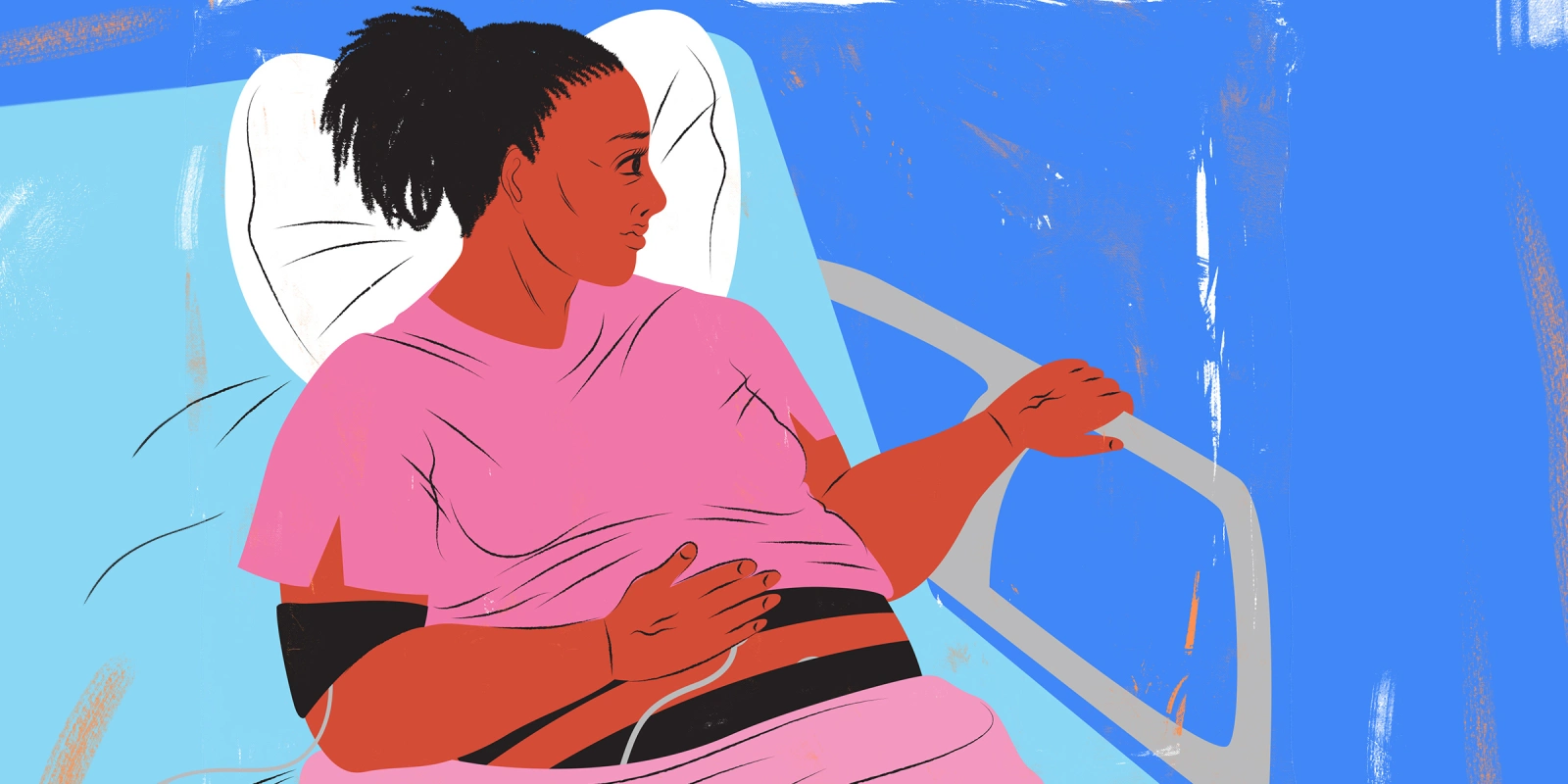I had been avoiding the hallway all day but somehow found myself passing through at the end of the day. As I walked, I couldn’t help but glance toward my old unit. The space was devoid of movement. The doors — usually in dynamic motion with family, caregivers, and other staff moving in and out — were shut.
The nursing station was the hardest to take in. The laughter, bustle, and incessant beeping from the Trace-view software were no longer there. The familiar faces that strived alongside mine to welcome new life into the world were absent as well. Many of the longtime nurses that staffed the labor and delivery (L&D) unit had left in the months leading up to our department closure, when it became clear that the end was inevitable.
Just the other day, a patient asked with tears in her eyes, “Is it true? I’ve delivered my three other children at that hospital. My mom delivered ME there. I can’t imagine going anywhere else!” We were supposed to tell them about the advantages of the tertiary care centers 30 minutes away (owned by the same hospital system), with its updated rooms, state-of-the-art technology, and consultants of every stripe available on call. Yet most women found this unimportant when compared to the experience of delivering in an intimate hospital setting, being encouraged by the nurse who coached them on their first delivery, and their baby being delivered by the obstetrician who once ushered them into the world. Those with a history of rapid deliveries or preterm labor were particularly worried, with good reason, as preterm labor is considered a major cause of neonatal mortality.
The town’s population was largely Hispanic and the majority did not have private insurance. They did have large families, often starting a new family in their late 30s and early 40s. They also struggled with the usual diseases that affected that particular population: obesity, diabetes, preterm births, and multiple cesarean sections. Those of us who served these patients enjoyed the life of a true community physician — rapidly becoming an antiquated concept. We were recognized in grocery stores, consulted on the sidewalk and at school drop-offs, invited to weddings and funerals and baby showers. As fellow community members, we understood the population at a deeper level, and this is likely why so many patients returned to us for their care. The other options in the area were limited to the large and overwhelmed county hospital, and a Sutter affiliate, which accepted only limited types of insurance.
During the pandemic, small community L&D units like ours found their census rapidly dropping. This was mainly because the guidance was to divert patients with COVID-19 to larger centers where they could get the integrated care that would be needed if they decompensated. It was the right thing for the times, yet when the hysteria of the first two years stabilized, this trend did not immediately revert back to pre-COVID norms. Smaller L&D units found their delivery numbers permanently impaired and revenues decreasing. This phenomenon has led to the rapid closure of such units throughout the country. States like New York, New Hampshire, and Delaware have seen closures this year. Alecia McGregor (at Harvard TH Chan School of Public Health) states that the units tend to be primarily in "Black hospitals or Latino hospitals." Maternity wards are uniquely vulnerable to being shut down because they are more reliant on Medicaid, which reimburses at lower rates compared to commercial insurance options.
When looking at long-term trends it appears that the pandemic only served to worsen already deplorable statistics: Between 2006 and 2020, over 400 maternity centers had already closed. The main reasons were decreasing numbers of births, staffing issues, and financial distress, according to Peiyin Hung, deputy director of the University of South Carolina’s Rural and Minority Health Research Center. This led to almost 7 million women having no delivery options within their own counties.
The loss of delivery centers has become such a phenomenon that it has garnered its own moniker — “maternity deserts.” The March of Dimes has made maternity deserts a focus of their latest newsletter, stating: "Nationwide, five percent of counties have less maternity access than just two years ago. These areas of combined low or no access affect . . . almost 500,000 births in the U.S. In maternity care deserts alone, approximately 2.2 million women of childbearing age and almost 150,000 babies are affected."
At the same time, maternal death in the U.S. remains one of the highest in developed countries, with a rate between 24 to 33 deaths per 100,000 live births. In the U.S., an average of two women die every day from complications of pregnancy and childbirth and two babies die every hour. This number is even higher in Black and Latino mothers — the very populations most affected by maternity deserts.
In our small California community, we physicians initially stayed to provide gynecology-only services as well as prenatal care. However, the reimbursements were poor. Private practitioners left, and those of us that were employed found our employers restructuring our practice to the detriment of patients and physicians alike. It was untenable, and more of us have moved on, leaving women of all ages without sufficient access to care. It is a situation that plagues my conscience, as it must plague everyone who worked and cared for our patients. Among the myriad issues that need rapid and urgent policy change in women’s health care — abortion care, expanded maternity leave, and insurance coverage of women’s medications — this problem must be added to the very top of the list.
Dr. Maya Nambisan has practiced in California's central valley for over 11 years as a full-scope ob-gyn. She is interested in the intersection between public health, policy and women's health care and hopes to explore more issues that put a spotlight on the needs and challenges facing women's health care today.
Image by Ken Tackett / Shutterstock






